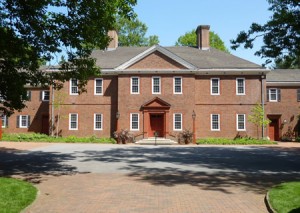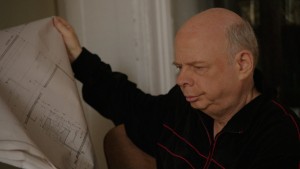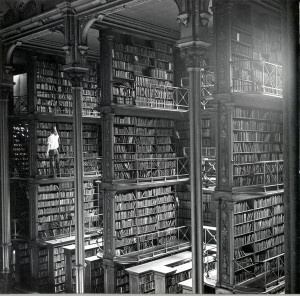MOUNT CUBA
 The other day we drove to Mount Cuba, a horticultural center in Delaware. The forest garden is part of an estate built in the 1930s by Lammot du Pont Copeland and his wife Pamela, a branch of the mighty Delaware family. We went to look at the trillium garden, but I was also impressed by the house, a very large Colonial Revival mansion that was completed in 1937. The beautiful brick architecture was exquisite, simple to the point of distillation. The design was the work of Victorine and Samuel Homsey. Samuel (1904-1994), a native of Boston, graduated from MIT and met and married Victorine du Pont (1900-98),
The other day we drove to Mount Cuba, a horticultural center in Delaware. The forest garden is part of an estate built in the 1930s by Lammot du Pont Copeland and his wife Pamela, a branch of the mighty Delaware family. We went to look at the trillium garden, but I was also impressed by the house, a very large Colonial Revival mansion that was completed in 1937. The beautiful brick architecture was exquisite, simple to the point of distillation. The design was the work of Victorine and Samuel Homsey. Samuel (1904-1994), a native of Boston, graduated from MIT and met and married Victorine du Pont (1900-98),

 Marcel Breuer built his second house in New Canaan, Ct., in 1951. Known as Breuer House II, it served as the family’s home until 1975 when Breuer, then 73, sold the property. The new owners hired Breuer’s longtime associate Herbert Beckhard, to enlarge the house. Over the years the house experienced more changes and was described as “essentially gutted.” By 2005 it was threatened with demolition. New owners bought the house, removed the additions, restored the interior and doubled its size with a large addition designed by Toshiko Mori. The house is currently for
Marcel Breuer built his second house in New Canaan, Ct., in 1951. Known as Breuer House II, it served as the family’s home until 1975 when Breuer, then 73, sold the property. The new owners hired Breuer’s longtime associate Herbert Beckhard, to enlarge the house. Over the years the house experienced more changes and was described as “essentially gutted.” By 2005 it was threatened with demolition. New owners bought the house, removed the additions, restored the interior and doubled its size with a large addition designed by Toshiko Mori. The house is currently for 

